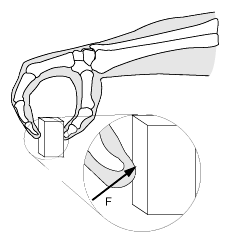
Figure 1. Our theoretical-experimental study of functional grasps helps us identify clinically relevant factors and principles to improve the restoration of hand function.
1996 Project Reports | Home | Contents | Previous | Next |
Francisco J. Valero-Cuevas, MS; Charles Burgar, MD; Felix E. Zajac, PhD; Vincent R. Hentz, MD; Kevin C. McGill, PhD; H. F. Machiel Van der Loos, PhD; Kai-Nan An, PhD
Objective - Overall, we seek to identify clinical factors and principles that contribute to improved grasping functions in wheelchair bound, spinal cord injured people. In particular, we aim to improve key and tip pinch between the index finger and thumb, which together could accomplish 80% of activities of daily living of quadriplegics. Improvements in the restoration of these grasping modalities has a direct impact on their independence and self esteem. Reconstructive surgeries, including tendon transfers, are commonly performed in quadriplegics to restore partial grasping function. To predict functional outcome, the surgeon relies heavily on what the biomechanical properties of the hand and arm are before and are expected to be after surgery. Even with extensive surgical experience, the success rate of tendon transfers varies, and surgeons are reluctant to risk performing new techniques if they are unable to guarantee the best possible outcome to the patient. Uncertainty in the functional outcome of new surgical approaches hinders our ability to achieve improvements in the treatment of quadriplegics. Our goal is to develop and use a realistic biomechanical model of the hand musculoskeletal system to provide surgeons with an ?in vitro? testbed for improving existing techniques, or trying new techniques, and predicting functional outcomes. Our model would allow surgeons to determine the precise musculoskeletal parameters to which the functional outcome of a surgical or rehabilitation procedure is most sensitive. Thus, those aspects of the surgical procedure needing close clinical scrutiny could be identified.
Approach - As a first step, we have developed a computer-implemented musculoskeletal modeling approach with emphasis on identifying the biomechanical factors bounding index finger grasping forces. The ability of the index finger is the focus because of its importance to quadriplegic grasping (e.g., tip and key pinch) and because of the anatomic similarity between the index finger and the other fingers. Maximum forces are emphasized because they specify the biomechanical limit of grasping performance. Our ongoing validation and improvement of the model for the normal hand involves recording electromyographic signals from the muscles of the index finger while people generate maximum static forces with the index finger tip with the finger in different postures.
Progress - The computer model of the index finger predicts that, although the basic muscle excitation pattern producing maximum finger force in a given direction (i.e., for key or tip pinch) ought to be robust, it may also be sensitive to just a few musculoskeletal parameters (e.g., the moment arm of the flexor digitorum profundus at the proximal interphalangeal joint). Furthermore, because muscle coordination must equally address the goal of generating maximum force in a specific direction while maintaining finger posture, unintuitive excitation patterns are predicted. For example, in generating maximum abduction force (analogous to that during key pinch), the first dorsal interosseous muscle, the main finger abductor, should be maximally excited. However, extensor muscles must also be highly excited because they must balance the flexor torque the first dorsal interosseous generates at the metacarpophalangeal joint. Our experimental work has verified the above unintuitive excitation patterns for key pinch. Thus, finger extensors must also be considered essential to proper abductor force during key pinch. Moreover, our experimental work has elucidated important, and not modeled, aspects of finger biomechanics such as the need to actively control torsion of the proximal phalanx to produce stable key pinch force.
 Figure 1. Our theoretical-experimental study of functional grasps helps us identify clinically relevant factors and principles to improve the restoration of hand function. |
Republished from the 1996 Rehabilitation R&D Center Progress Report. For current information about this project, contact: Francisco J. Valero-Cuevas